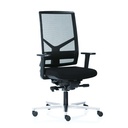Shoulder Pain
ABOUT SHOULDER DISORDERS
Shoulder pain is generally caused due to injury, strain or disease of the shoulder joint.
Strain or injury can affect the ligaments or tendons surrounding the shoulder joint. Injury can also affect the ligaments, cartilage, menisci (plural for meniscus), and bones of the joint.
The shoulder joint needs to sacrifices stability for mobility. It plays a central role in the action of a major extremity, due to its mobility the shoulder is at risk for injury.
Shoulder pain is caused by shoulder disorders. About 30% of adults are affected by shoulder disorders at any given time. The most common shoulder disorders for middle aged and the elderly are frozen shoulder and rotator cuff disorders. Frozen shoulder reduces the joints normal range of movement and can sometime restrict movement altogether. This can be a very painful condition. Rotator cuff disorders are strains to the rotator cuff group of tendons and muscles that are needed for stability of the shoulder.
COMPUTER ERGONOMICS AND RSI
Those working on a computer for three or more hours a day may well be tapping the keyboard at least 50,000 to 100,000 times daily. This then the magnitude of the problem and there is more to RSI then mere shoulder pain from mouse usage.
The medical fraternity and ergonomists alike advocate an array of options when it comes to preventing RSI in general and shoulder pain due to mouse in particular. A minor adjustment in the workplace design or alternatively a correction in personal posture may well make a significant difference when it comes to preventing RSI.
SHOULDER PAIN CONTRIBUTORS
The force applied or used to drop or drag while using a mouse can lead to awkward postures and work positions. Thus it is not unusual to experience right shoulder pain or even left shoulder pain, depending on which hand is being utilised to operate the mouse. Statistics indicate that one third of all RSI are due to computer usage making computer ergonomics as one of the most sought after preventive option while in the workplace.
The muscles and tendons around the shoulders can only continuously use the computer and take the weight of the arms without a break for so long. Computer usage uses 5% of your overall strength on average. You need to come down to less than 3% of overall strength to be able to continue to use your shoulder muscles without strain or risk of an injury. This highlights the importance of using arm rests that support your arms in the neutral position that allow the muscles to recover.
PREVENTING RSI AND SHOULDER PAIN FROM MOUSE
An action as innocuous as working on the keyboard may well result in a shoulder injury or a RSI in the region of the wrist. This is best prevented by using a separate mouse with the keyboard and placing a wrist mat in front of the keyboard. The benefit of using a wrist mat is that it keeps the wrist straight while typing.
It is important to ensure you use arm rests on the chair to support your arms. The arm rests should always be height and width adjustable, so the user can sit in an upright position with their arms supported in a neutral posture. If the arm rests are not adjustable, it can result in the user leaning into an awkward posture in order to get support on an arm rest.
Another reason for the strain to muscles and tendons in the shoulder is often due to over extension of the arm due to incorrect placement of the keyboard and mouse. It is important to narrow your working circle and keeping your mouse and keyboard close to you. If you have shoulder strain only in your mouse arm, using a mini-keyboard or Rollermouse will effectively reduce the level of strain my narrowing your working circle and placing your shoulder in a neutral position.















